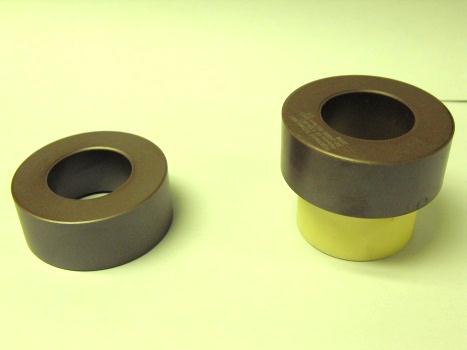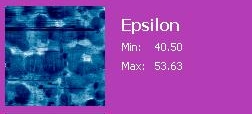Case Study:
Micron Scale Dielectric Measurements to Characterise Dielectric Resonator Materials
Powerwave Technologies Inc is a leading company in the design and manufacture of rf and microwave filters, antennas and power amplifiers for the mobile telecommunications industry. The Ceramics Division of Powerwave, undertakes the development and manufacturing of new microwave dielectric ceramic compositions and components. The frequency range of parts extends from 700 MHz to 10 GHz at this time and involves several different materials but most are based upon the titanates.
As is well known, titanates are prone to reduction during firing, i.e where the Ti4+ ion becomes Ti3+ with the corresponding injection of an electron into the lattice. Free electrons are believed to give rise to localised conduction and increased dielectric loss. Reduction during firing can in large volume parts cause the centre of the component to be of a blue / black colouration. The issue of reduction and increased dielectric loss is one which has significant interest for the Ceramics Division particularly where we press and fire components of weight 350 - 500 g each.
Components are formed after pressing a spray-dried powder at a load of 100 tonnes and firing at ~ 1500°C for eight hours. Components fired under these conditions are prone to reduction. As part of the EMINDA programme, Powerwave sectioned a 900 MHz resonator, shown in Figure 1 and took four pieces for analysis:
Sample 1 - Top of resonator
Sample 2 - Down from top
Sample 3 - Down from sample 2
Sample 4 - Base of resonator (in contact with firing plate).

Figure 1: The 900 MHz dielectric resonator
The samples were examined using the Near Field Scanning Microwave Microscope (NSMM) at the National Physical Laboratory (NPL), UK. This is being for developed to enhance its measurement capabilities under the EMINDA project.
 |
 |
Figure 2: NSMM scans of the real permittivity, ε (epsilon), of two dielectric resonator samples, showing the structure in the ceramic. The lighter the shading, the higher the permittivity. Each image shows a 100 by 100 µm area and is made up of 1 µm pixels. |
|
Images from two of the scans of the resonator slices are shown in Figure 2. They clearly show evidence for the continued existence of a spray dried agglomerate structure even after firing. Such a structure may offer paths for the binder egress and re-oxidation kinetics associated with the reversible Ti4+ / Ti3+ electron hopping phenomena. Q-values were seen to decrease with distance from the upper surface of the resonator - potentially corroborating the assumption that such large production components are subject due to reduction and loss of Q. Potential future aims would be to amend the firing behavior of such a resonator and determine whether this changes not only the measured Q of the resonator but also whether such changes could be detected using the NPL NSMM once it is enhanced in the EMINDA project. Can we determine correlations with local structure to macroscopic changes in Q and processing?
